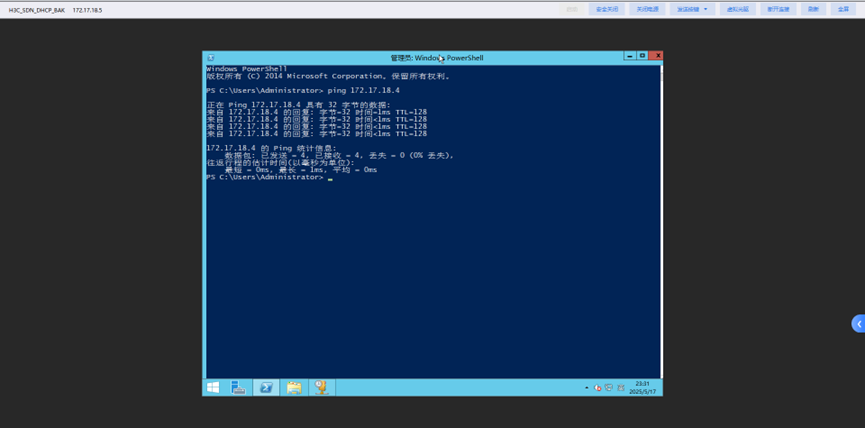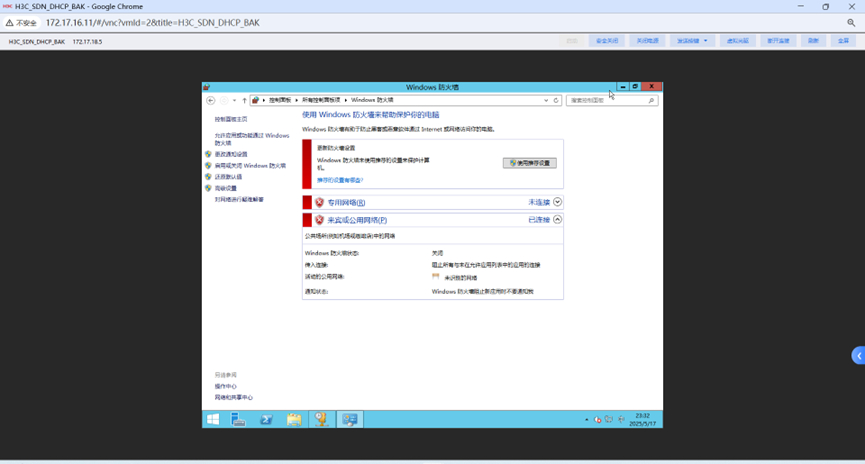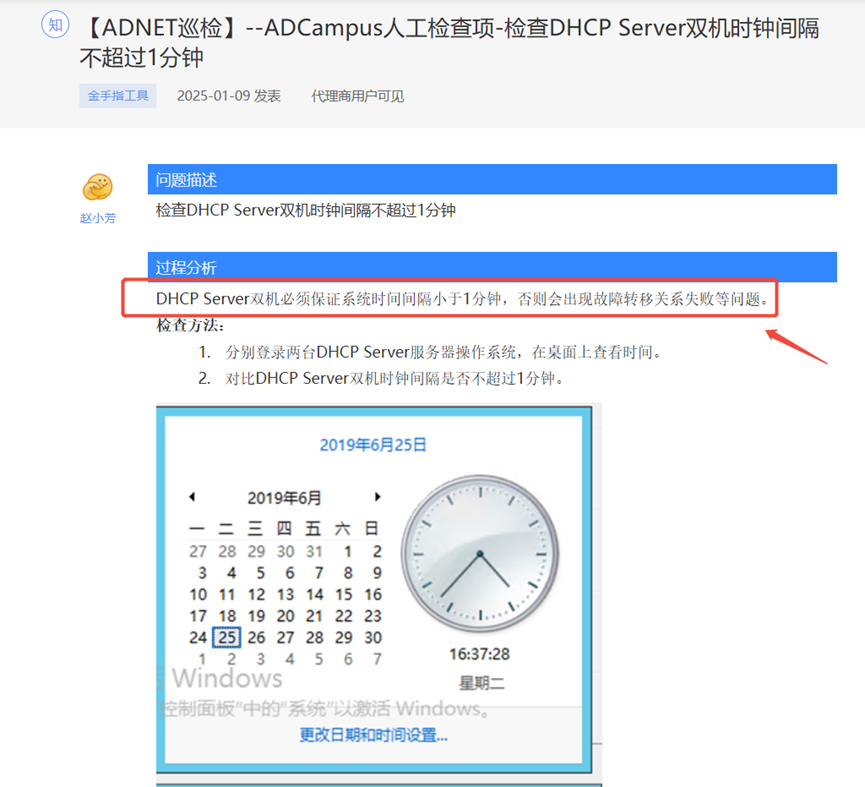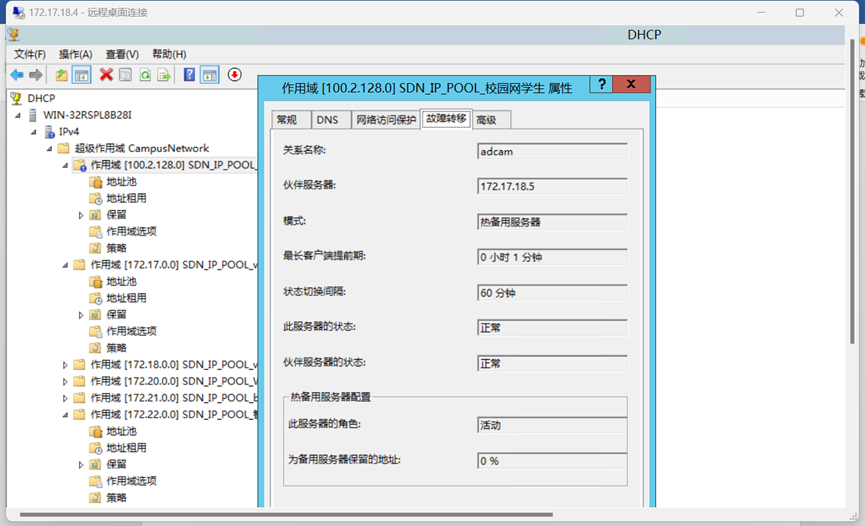The clock interval between dual DHCP Servers in the ADcampus environment exceeds 1 minute, causing terminals to fail to obtain an IP address
- 0 Followed
- 0Collected ,301Browsed
Network Topology
Non-standard ADCampus networking, DHCP server deployed as a virtual machine on CAS, ADCampus server cluster deployed as a virtual machine on CAS
ADCampus version:

Problem Description
description
During power supply renovation at XX University, improper operation caused a complete power outage in the core server room. After the CAS server abnormally shut down, a large number of students reported that the campus area network (CAN) could not be connected or used. Field testing revealed that terminals could not obtain an IP address normally.
Fault symptoms
1. Checking logs on the leaf revealed a large number of IP address conflicts

2. Logging into the DHCP server showed the address pool usage rate was 100%

Additionally, there were numerous bad addresses

Manually deleting bad addresses in PowerShell
Remove-DhcpServer4Lease -Sc0peId x.x.x.x -BadLeases

After manually deleting bad addresses, the DHCP address pool usage remains at 100%.

Process Analysis
Problem analysis:
Contact the second-line support. After investigation, they suspected it might be caused by a failover relationship failure. First, restore the DHCP failover relationship to normal, then run the script to clear bad addresses.
1. Check the failover relationship between primary and secondary DHCP servers
Then inspect the DHCP failover relationship and check the failover status of primary and secondary DHCP servers. It was found that the primary DHCP server lost connection with the secondary DHCP server(The followingVMware Workstation Prois manually set up to simulate the live network environment and does not represent real device IPs in the live network)
Primary DHCP server failover relationship status:

Status of secondary DHCP server failover relationship:

2. Check network connectivity from secondary DHCP server to primary DHCP server
Open secondary DHCP server to ping primary DHCP server, network is reachable

3. Check firewall status of primary and secondary DHCP servers
Secondary DHCP server firewall is closed:

Primary DHCP server firewall is closed:

4. Check system time difference between primary and secondary DHCP servers
Compare system time of primary and secondary DHCP servers, found time difference exceeds 1 minute:
Primary DHCP server system time is as follows:

The system time of the backup DHCP server is as follows:

Trigger inspection announcement:
https://zhiliao.h3c.com/Theme/details/229056

Solution
Issue identification:
The time difference between primary and secondary DHCP servers exceeding 1 minute caused the failover relationship to fail, resulting in a large number of bad addresses that consumed DHCP pool resources, preventing terminals from obtaining new IP addresses
Solution:
After adjusting the system time interval between primary and secondary DHCP servers to less than 1 minute, the failover relationship returned to normal

Manually clearing the bad addresses was then performed successfully, restoring service
